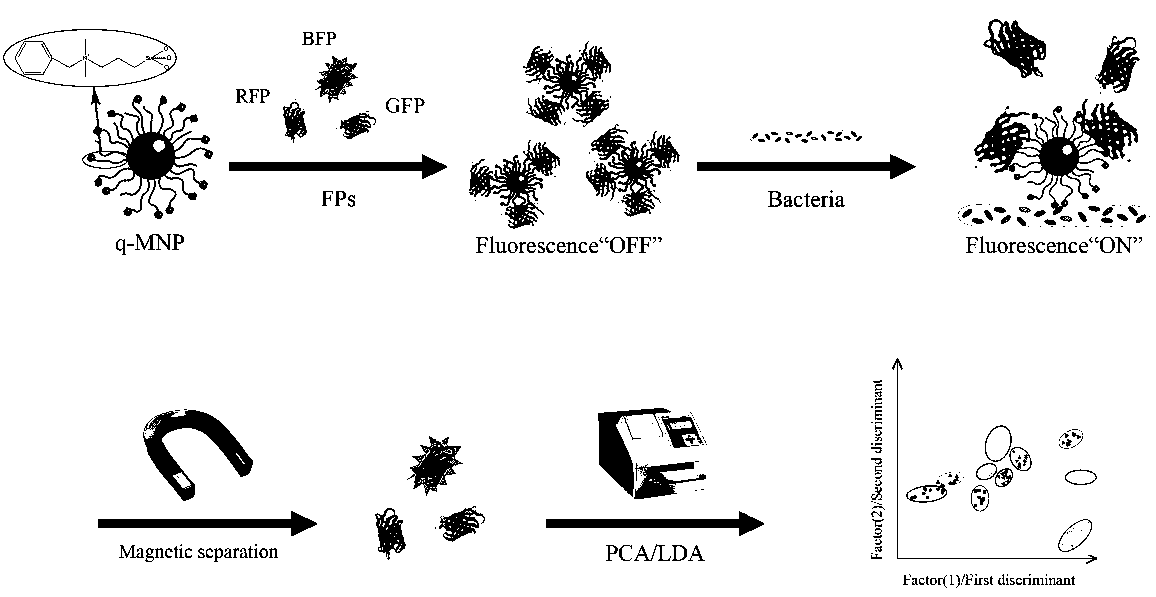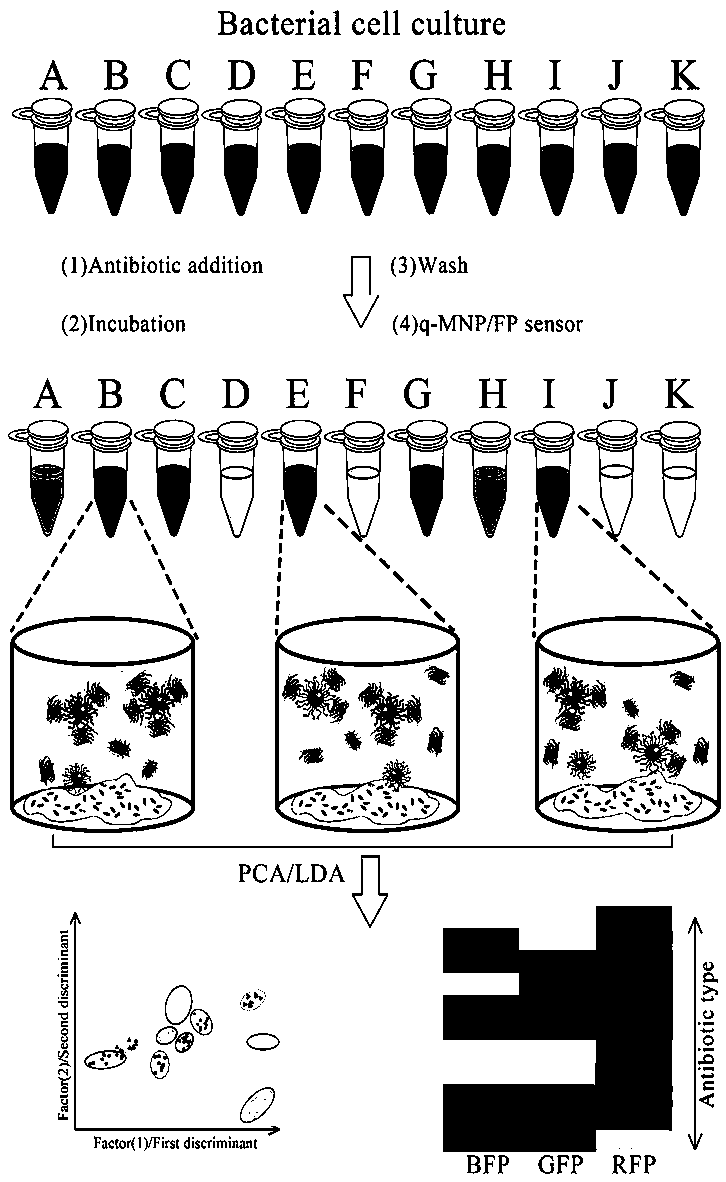Method for quickly detecting pathogenic microorganism through multicolor fluorescence magnetic chemical nose sensor
A sensor and blue fluorescent protein technology, applied in the field of biosensing, can solve the problems of difficult analysis results due to technical requirements, cumbersome microbial antibody screening, low detection specificity, etc., to shorten the analysis time, facilitate the separation of target bacteria, The effect of simplifying the analysis and detection steps
- Summary
- Abstract
- Description
- Claims
- Application Information
AI Technical Summary
Problems solved by technology
Method used
Image
Examples
Embodiment 1
[0036] "Chemical nose" sensor construction: the concentration of (100 n M) blue fluorescent protein, green fluorescent protein and red fluorescent protein and phenyl functional group quaternary ammonium salted magnetic nanoparticles are titrated until three kinds of fluorescence intensity Reduce to the lowest value. The fluorescent polymer-magnetic "chemical nose" sensor can be obtained.
Embodiment 2
[0038] Salmonella typhi was cultured in LB medium at 37°C for 12 hours, then washed three times with PBS and diluted to a concentration of 5×10 8 cfuml -1 , Take 100μL of the above bacterial liquid and 100μL of nanosensor complex and incubate for 15min. A magnet is used to remove magnetic particles or magnetic particle-microbe complexes, and a microplate reader is used to measure the response signals of the three fluorescent arrays. Combining with linear discriminant analysis can determine the species of Salmonella typhi.
[0039] Salmonella typhi was cultured in LB medium at 37°C for 12 hours, then washed three times with PBS and diluted to a concentration of 5×10 6 cfu ml -1 , Take 100μL of the above bacterial liquid and 100μL of nanosensor complex and incubate for 15min. A magnet is used to remove magnetic particles or magnetic particle-microbe complexes, and a microplate reader is used to measure the response signals of the three fluorescent arrays. Combining linear discrim...
Embodiment 3
[0042] Enterococcus faecalis was cultured in LB medium at 37°C for 12 hours, then washed three times with PBS and diluted to a concentration of 5×10 8 cfuml -1 , Take 100μL of the above bacterial liquid and 100μL of nanosensor complex and incubate for 15min. A magnet is used to remove magnetic particles or magnetic particle-microbe complexes, and a microplate reader is used to measure the response signals of the three fluorescent arrays. Combined with linear discriminant analysis, the species of Enterococcus faecalis can be determined.
[0043] Enterococcus faecalis was cultured in LB medium at 37°C for 12 hours, then washed three times with PBS and diluted to a concentration of 5×10 6 cfu ml -1 , Take 100μL of the above bacterial liquid and 100μL of nanosensor complex and incubate for 15min. A magnet is used to remove magnetic particles or magnetic particle-microbe complexes, and a microplate reader is used to measure the response signals of the three fluorescent arrays. Combi...
PUM
| Property | Measurement | Unit |
|---|---|---|
| diameter | aaaaa | aaaaa |
Abstract
Description
Claims
Application Information
 Login to View More
Login to View More - R&D
- Intellectual Property
- Life Sciences
- Materials
- Tech Scout
- Unparalleled Data Quality
- Higher Quality Content
- 60% Fewer Hallucinations
Browse by: Latest US Patents, China's latest patents, Technical Efficacy Thesaurus, Application Domain, Technology Topic, Popular Technical Reports.
© 2025 PatSnap. All rights reserved.Legal|Privacy policy|Modern Slavery Act Transparency Statement|Sitemap|About US| Contact US: help@patsnap.com



